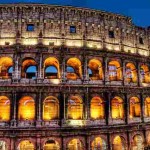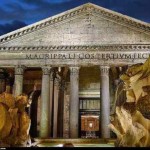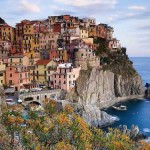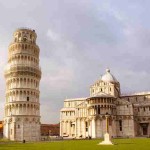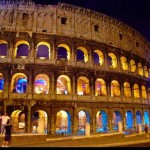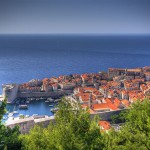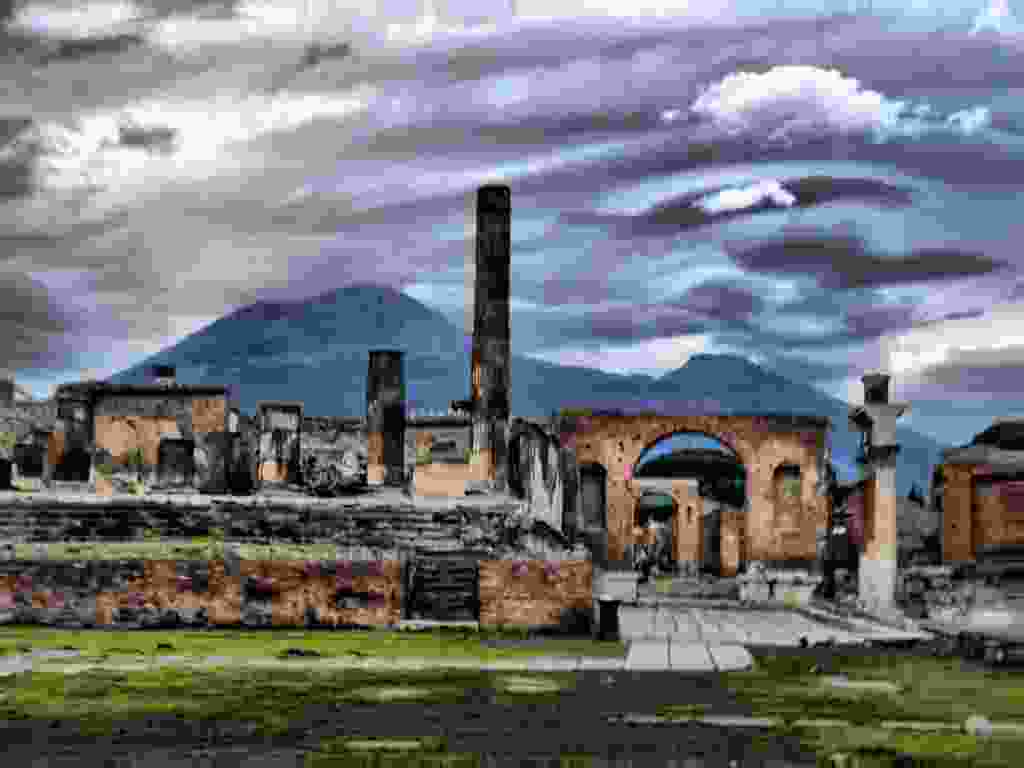
Pompeii was an Ancient Roman city located in the modern city of Naples in Campania, Italy. One of the most commonly known Pompeii Facts is that the town, Herculaneum and other villas situated within the surrounding vicinity were destroyed and most were buried under four to six meters of pumice and ash when Mount Vesuvius erupted in 79 AD.
Pompeii History
According to the results from the researches done in the area, Pompeii could have been established as a town during the seventh or the sixth century BC by Oscans or Osci. The town went under the Roman rule in 4th century BC. Additionally, records show that Pompeii was conquered after it lost its bid to rebel against the Roman Republic in 80 BC and then it was turned into Roman colony. It was 160 years later when the destruction caused by the Pompeii volcano happened and there were about 11 thousand people living in the city. That time, Pompeii was prosperous enough to have its own port, gymnasium, amphitheater and a modern water system.
Key Pompeii Facts
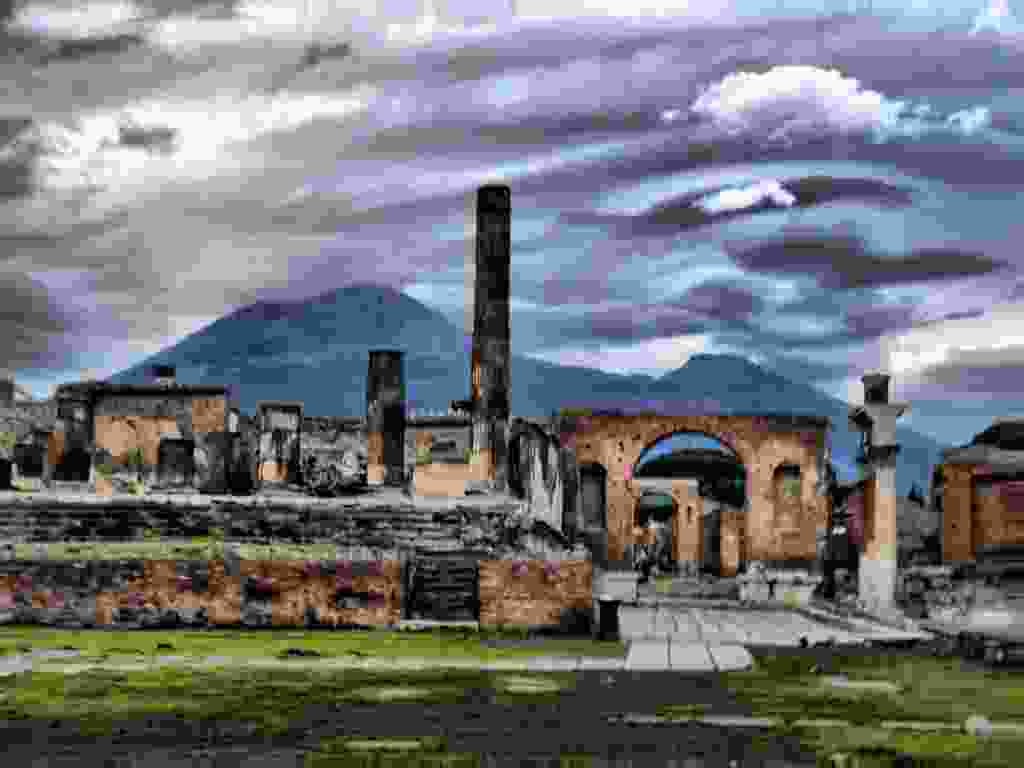
For those interested in Pompeii, here are some of the most common Pompeii facts that you should know:
- Mount Vesavius blew up literally on August 24 of the year 79 AD.
- The eruption of the volcano created tons of sulfuric gas, pumice and molten ash.
- The entire area was engulfed with a suffocating firestorm of molten debris and poisonous vapors.
- The streets of the cities of Pompeii, Stabiae and Herculaneum were filled with falling debris and these communities were not to be seen again for the next 1700 years.
- The eruption of the volcano destroyed city and killed the inhabitants before finally burying Pompeii under tons and tons of ash.
- The very first evidence of the massive destruction came from a letter written by Pliny the Younger. Pliny witnessed the destruction of the city from a distance. The letter tells of how a Roman fleet admiral, Pliny the Elder, rescued citizens and died doing it. Pliny was 18 at that time and he was living with his brave and courageous uncle.
- The letter was considered to be the most significant evidence of life in those times and Pliny the Younger has been called the ancient voice that reached out from history to tell everyone about the disaster.
- The letters written by Pliny the Younger’s were discovered during the 16th century.
- A few years succeeding the massive destruction, Pliny wrote to Cornelius Tacitus to describe was transpired during that fateful day in August of the year 70.
- The entire site was unknown to succeeding eras until it was rediscovered in 1599 and then a wider rediscovery attempt was conducted after 150 years (1748) through the efforts of Rocque Joaquin de Alcubierre.
- Due to lack of moisture and air, all the object that remained buried through years have remained intact and well-preserved.
- The artifacts that were gathered have been used to provide astonishingly complete insight into what was life during that time.
- The rediscovered site of ancient Pompeii is now a popular tourist destination and has been one for more than 250 years.
- The site was declared a UNESCO World Heritage Site in 1997.
- It is very popular as a tourist destination that it attracts about 2.5 million tourists every year.
- Pompeii was located in the southern part of Italy and it was an ancient Roman city. The remains of the destroyed and buried site are located in what is known today as Naples.
- Pompeii was a city built and prospered at the foot of Mount Vesuvius, the very volcano that destroyed and buried it for many generations.
- Pompeii was already in existence even before the beginning of the Roman rule.
- It was considered by the historians that the settlement was built and established by Oscan civilization in 6th century BC.
- The city was also under the control of the Samnites.
- In 80 BC, Pompeii became a Roman city.
- The city grew over the years and the original wooden buildings were slowly replaced with structures of brick and stone.
- During first century AD, the city was a flourishing port. It was quite a prosperous town resort for the wealthy visitors.
- Ancient Pompeii had Roman villas during its prime and it also has two theaters, an amphitheater and several temples.
- The city was significantly damaged by an earthquake in 16 AD. Most of the buildings were damaged and it took many years for the city to be rebuilt.
- In 17 AD, Mt Vesuvius erupted and buried Pompeii under ashes and killed most of its residents.
- Pliny the Younger wrote about the eruption and how his uncle, Pliny the Elder rescued a lot of people, but lost his own life.
- The buildings have been buried and preserved due to lack of moisture and air when the entire city was buried under volcanic ashes.
- Pompeii was completely forgotten until it was rediscovered in 1748.
- In 1863 the gaps and voids in the layers of ashes have been realized as those left by decomposed bodies.
- Plaster was used in reproducing the exact formation of these bodies.
- Along with Pompeii, other cities were also affected when the volcano erupted. These cities were Stabiae and Herculaneum.
- After its rediscovery, Pompeii became one of the most popular tourist destinations in Italy.
- More than two million people visit this site every year.
If you are thinking of visiting Pompeii, it would be best to know more about this historic site. These Pompeii facts should be very helpful to you. The list should be able to provide you with a good insight on how the city was flourishing before it was destructed and buried. Many people have already been there and many more are surely going to come. Do not get left behind; enjoy the chance to get up close and personal with this wonderfully reserved ancient Roman city, known as Pompeii.
Author: Tajirul Haque
Tajirul Haque is a travel enthusiast and freelance travel writer on Upwork. Having written hundreds of travel articles on so many travel destinations around the world for his clients, Tajirul started Top Travel Lists back in September 2014. Travel writing is his passion and he always loves to write about a new destination as it allows him to know about more beautiful places the planet has to offer. He is always available for freelance travel writing opportunities.

